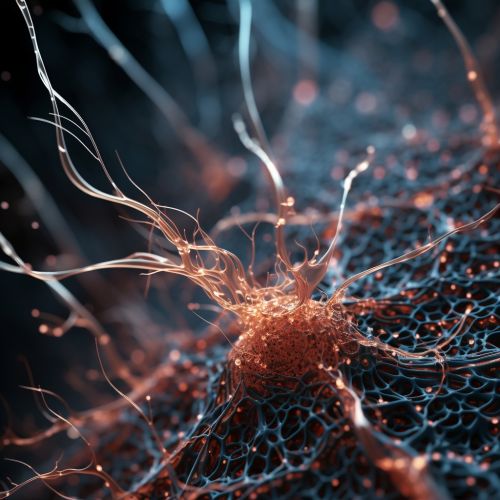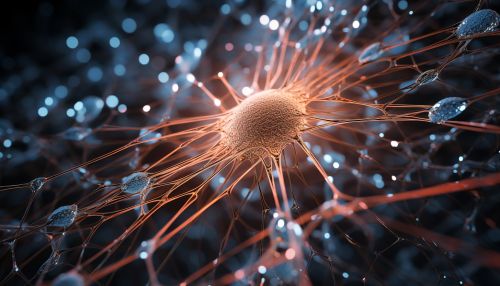Neuromuscular Junction
Introduction
The neuromuscular junction (NMJ) is a specialized synapse between a motor neuron and a muscle fiber. It serves as the site where the motor neuron communicates with the muscle fiber to initiate muscle contraction. The NMJ is essential for voluntary movement and plays a crucial role in the functioning of the muscular system.
Structure
The NMJ is composed of three main components: the presynaptic terminal, the synaptic cleft, and the postsynaptic membrane.
Presynaptic Terminal
The presynaptic terminal is the end of the motor neuron that contains vesicles filled with acetylcholine (ACh), a neurotransmitter. These vesicles are released into the synaptic cleft upon the arrival of an action potential.


Synaptic Cleft
The synaptic cleft is a small gap between the presynaptic terminal and the postsynaptic membrane. It is filled with a matrix of collagen and proteoglycans that help to maintain the structure of the NMJ.
Postsynaptic Membrane
The postsynaptic membrane, also known as the motor endplate, is the surface of the muscle fiber that contains receptors for ACh. These receptors are called nicotinic acetylcholine receptors (nAChRs).
Function
The primary function of the NMJ is to transmit signals from the motor neuron to the muscle fiber, leading to muscle contraction. This process involves several steps:
1. An action potential arrives at the presynaptic terminal. 2. This triggers the release of ACh from the vesicles into the synaptic cleft. 3. ACh diffuses across the synaptic cleft and binds to nAChRs on the postsynaptic membrane. 4. The binding of ACh to nAChRs opens ion channels, allowing sodium ions to flow into the muscle fiber. 5. The influx of sodium ions generates an action potential in the muscle fiber. 6. This action potential triggers the release of calcium ions from the sarcoplasmic reticulum within the muscle fiber. 7. The calcium ions initiate the process of muscle contraction.
Disorders
Several disorders can affect the NMJ, leading to muscle weakness and fatigue. These include myasthenia gravis, Lambert-Eaton syndrome, and botulism.
Myasthenia Gravis
Myasthenia gravis is an autoimmune disorder in which the body's immune system attacks the nAChRs on the postsynaptic membrane. This reduces the number of functional nAChRs, impairing signal transmission at the NMJ.
Lambert-Eaton Syndrome
Lambert-Eaton syndrome is a condition characterized by the production of antibodies that interfere with the release of ACh from the presynaptic terminal.
Botulism
Botulism is a form of poisoning caused by the bacterium Clostridium botulinum. The toxins produced by this bacterium block the release of ACh from the presynaptic terminal.
